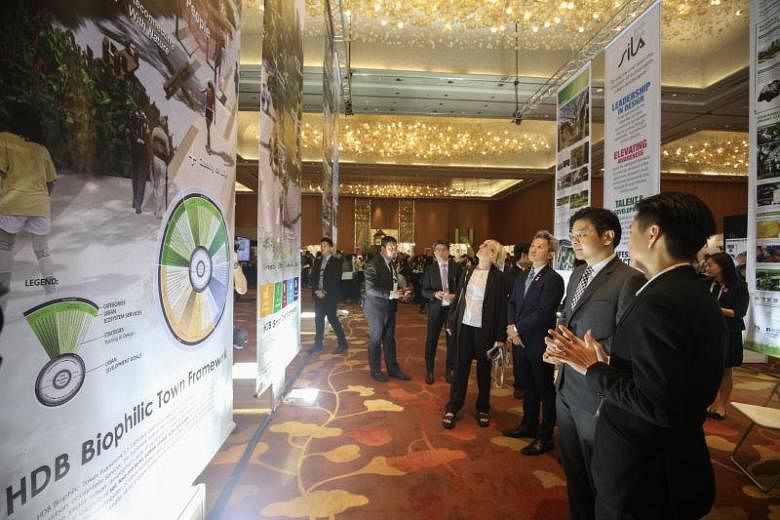SINGAPORE - Housing Board estates and nature are set to be intertwined under an updated framework that will be progressively applied to new housing projects from this month (July).
The Biophilic Town Framework, introduced in 2013 and refined through collaboration with the National University of Singapore, goes beyond just providing greenery for residents.
Instead, it incorporates a holistic assessment of how the landscape and residents can benefit from natural ecosystems during the planning and designing process of an HDB estate.
For example, not just any type of tree is planted to ensure good air quality. The species is picked based on how effective it is in removing air pollutants.
Biodiversity studies will also be done before site works so that existing flora and fauna can continue to flourish. For instance, if a particular butterfly species is found in the native site, "host plants" that attract such species will be planted at the development.
HDB announced the updated framework on Wednesday morning (July 18) at the International Federation of Landscape Architects World Congress held at Marina Bay Sands.
HDB chief executive Cheong Koon Hean said of the framework: "(It) provides a strong foundation for holistic planning and design of neighbourhood landscapes, so that our residents can enjoy a strong sense of place and well-being."
The key elements considered under the framework are soil, flora and fauna, outdoor comfort, water, and people.
This results in strategies such as nutrient recycling, where decomposed organic matter will be used to provide nutrients for plant growth. Previously, fallen leaves might have been cleared away.
Other methods include pest control through natural means, such as by developing dragonfly ponds to get rid of mosquitoes via predator-prey relationships.
The Biophilic Town Framework was first adopted in Punggol Northshore District in 2015. The area's 5,700 flats will be completed progressively from 2020.
Under the guidelines, measures were also introduced in Punggol to draw residents into the outdoors.
Wind and sunlight simulation studies were done so that community facilities and footpaths could be located in suitable places. A district-wide network of vegetated bioswales and rain gardens were also added to the design to filter out sediments and treat rainwater run-off naturally.
Ms Christine Leong, 32, a civil servant, is considering applying for a Build-to-Order flat in Tengah, whose first flats will be launched in November. The estate, dubbed as Singapore's first "Forest Town", will feature the framework's recommendations.
"It would be interesting to see how the natural elements interact with the built environment," said Ms Leong. "It will be nice to live amid such greenery that also serves a purpose."



